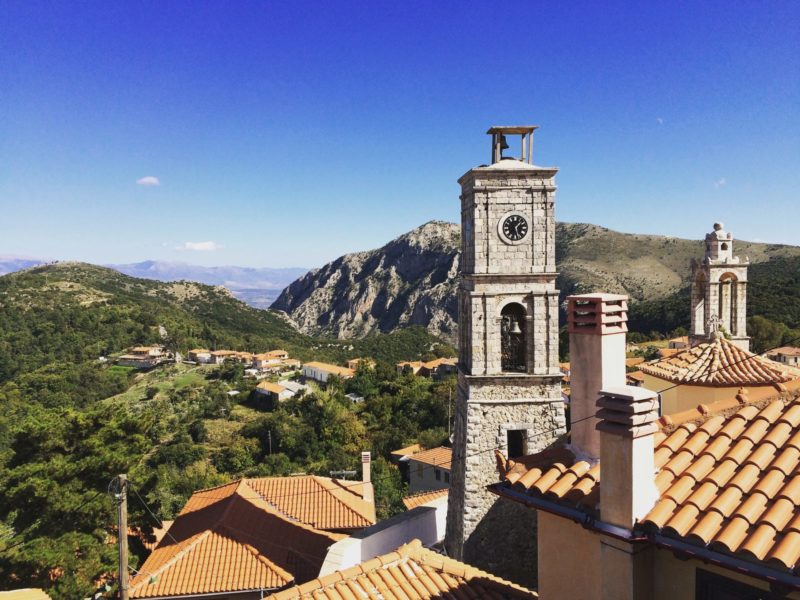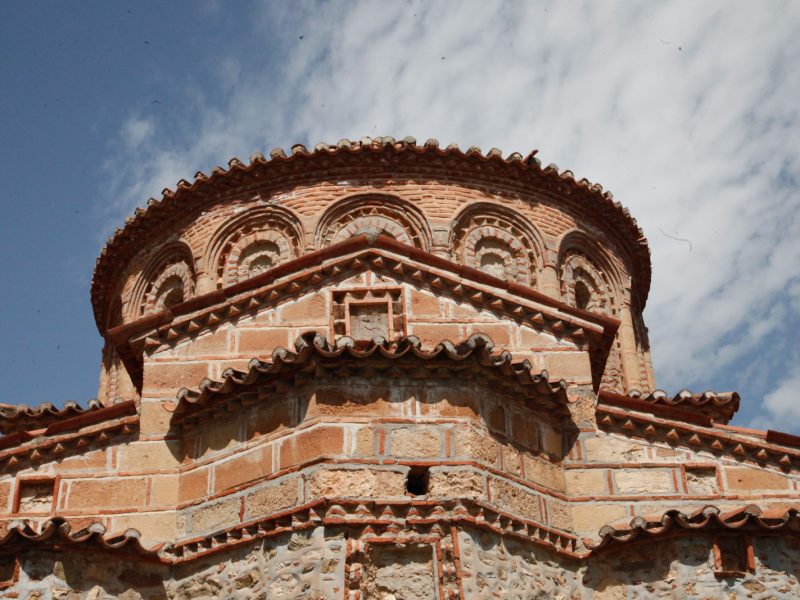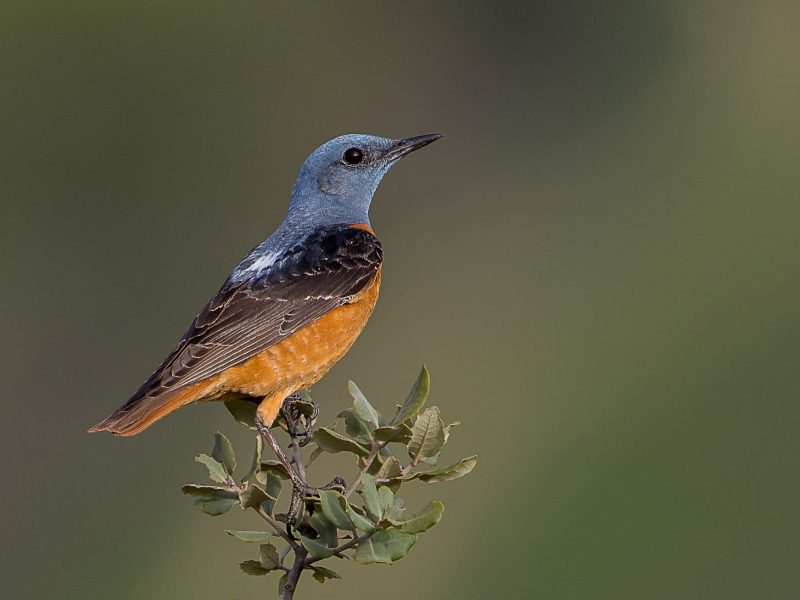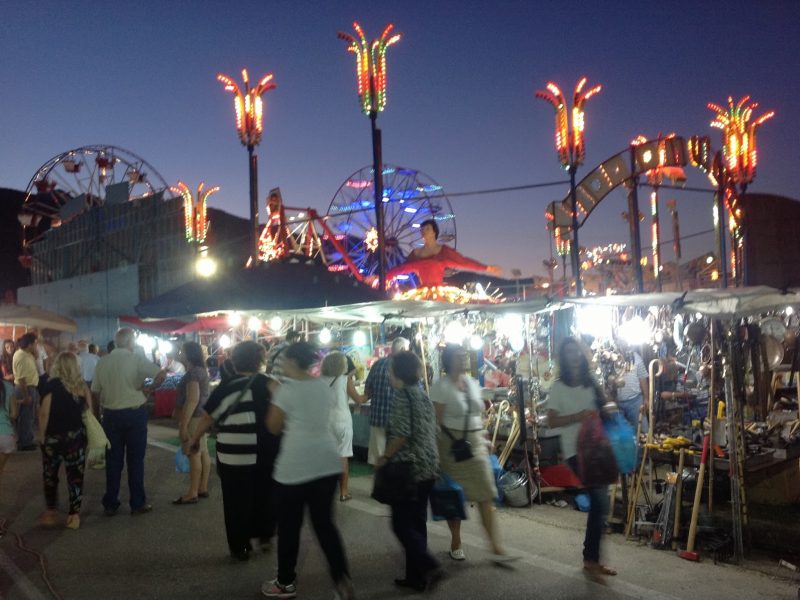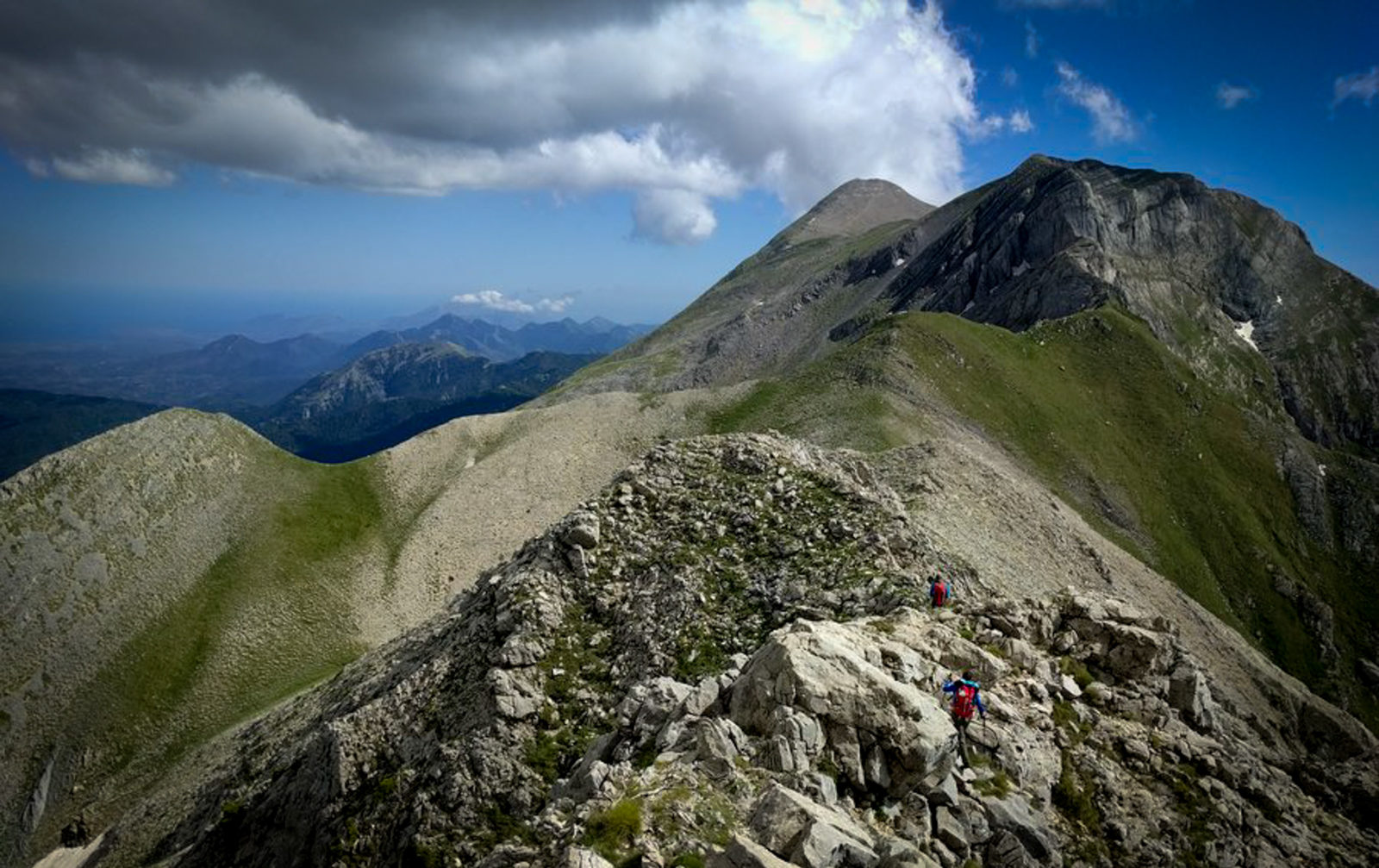


The name Taygetos, as Pausanias testifies, has mythological roots. It comes from Taygete, one of the Atlantids, who, full of shame from her involuntary mating with Zeus, ended her life by falling into a cliff of the mountain. Homer calls Taygetos “perimikis”, because of the great length of the mountain range, while Hesychius of Alexandria considers that its name comes from the Greek word “taus”, which means “great” or “much”. Virgil refers to it as Taygeta, while during the Byzantine period it was also called “Pentadaktylos” (Five-fingered), because of the five peaks of the central complex.
During the period of Frankish rule, the name Zigos of Meligou prevailed, from the Slavic tribe of Melingoi who, along with the also Slavic-speaking Ezerites, lived there. In the years of the Revolution of 1821, the mountain range was called “Agolias the long”, from the great length of the mountain range, until finally it took back its ancient name, Taygetos. By the Greek sailors who take its peak in sightings it is called “mountain of Mani”.
Source: wikipedia.org


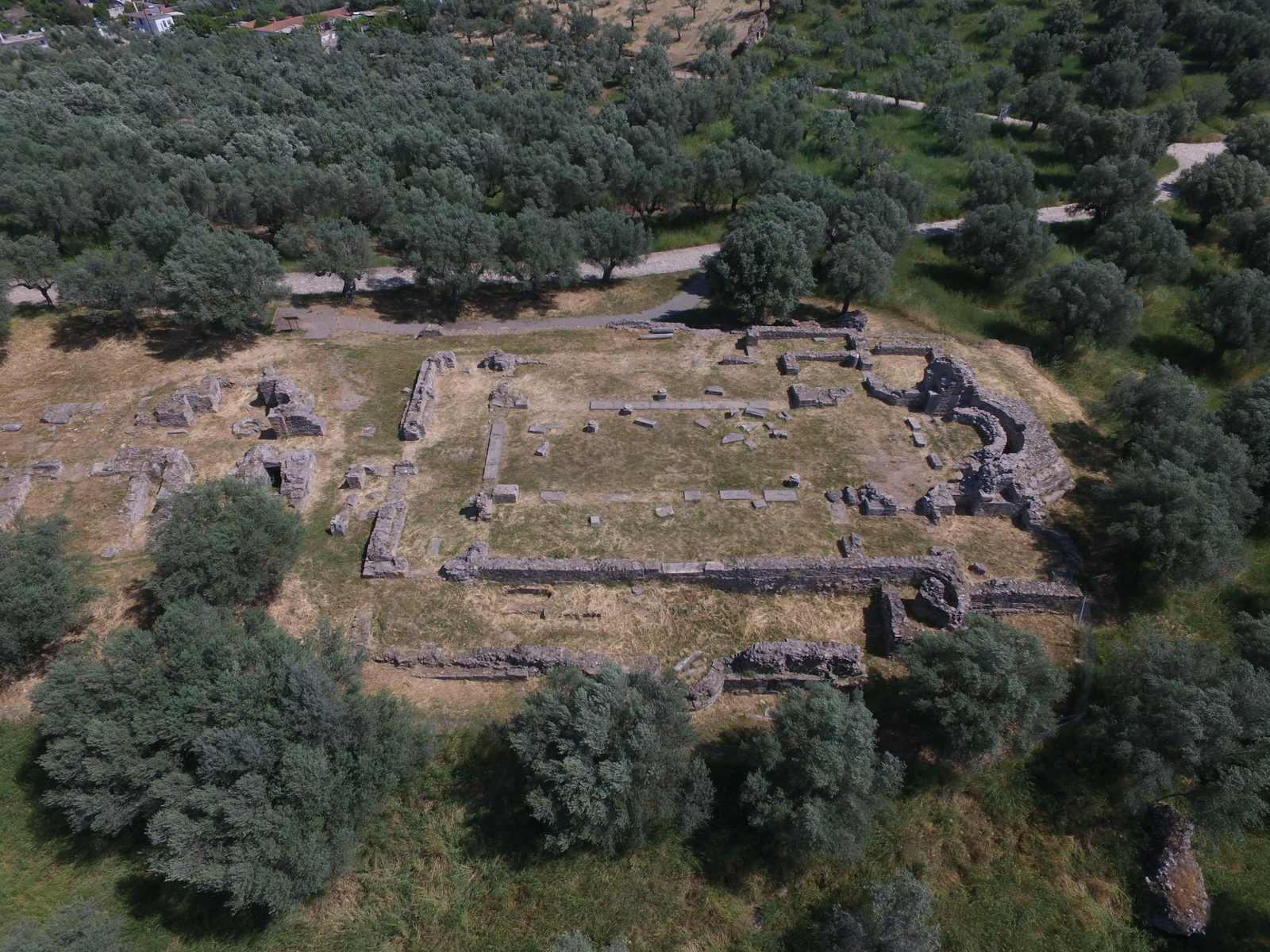
Historical times
The historical period of Sparta begins after the “Descent of the Dorians” in southern Greece around 1,100 BC, and coincides with the end of the Mycenaean civilisation. The Dorians were a Greek tribe of central Greece, who headed to Peloponnese and dominated with their strength. A strong group of them occupied Sparta and the surrounding areas, subjugating the Achaeans of Laconia. The “Descent of the Dorians” – as well as all the changes associated with it – is the last great event of the mythical times of Greece. At the same time, however, it is also the first event of the historical times that follow.
Initially, Sparta, the new kingdom of the Dorians, extended around the area of the fertile valley of Evrotas river, between Taygetos and Parnonas. The city, the main part of Ancient Sparta that remained for many centuries without walls, as a sign of confidence and strength, consisted initially of four villages (self-contained settlements): Kynosoura, which was located southeast, Pitana, which is located west, Limnes, which extended east to Evrotas, and Mesoa, the central settlement. Later, around the 8th century BC, a fifth village was added, Amykles. The peak of Sparta began after the expansion of its territory, with the conquest of Messenia first (8th-7th century BC) after long wars. Then (6th -5th century BC) the Spartans conquered areas of southern Arcadia and extended their domination to the rest of Laconia while also managing to limit the power of Argos. From the late 7th BC to the 4th BC century, the Doric Sparta dominated the military scene of Greece. Its emergence as a political and military power was the result of institutional reforms attributed to the legendary legislator Lycurgus.



Roman period
In 146 BC, Sparta, following the fate of the rest of the Greek world, was conquered by the Romans. Due to its glorious past, it enjoyed the favor of several Roman emperors, such as Augustus and Hadrian, and attracted the interest of many wealthy Romans who visited to witness firsthand a place with such a distinguished history. Thus, a new era of peace and prosperity began for Sparta during the Roman period, during which an aqueduct, a theater, baths, and other luxurious private and public buildings were constructed. The Sparta of the mid-2nd century AD, as described by the traveler Pausanias, was a wealthy and flourishing city, with vivid memories of its imposing history.
In 146 BC, Sparta followed the fate of the rest of the Greek world, and was conquered by the Romans. Due to its glorious past, it had the favor of several Roman emperors such as Augustus and Hadrian and attracted the interest of many wealthy Romans who came to see up close the place with such a glorious history. Thus, a new era of peace and prosperity began for Sparta during the Roman period, when the aqueduct, the theater, baths and other luxurious private and public buildings were built. The Sparta of the mid-2nd century AD, as described by the traveler Pausanias, was a rich and prosperous city with vivid memories of its imposing history.
The city thrived relatively well until the 3rd century AD. The mosaics discovered in excavations from this period are considered particularly significant, with the most outstanding being the famous mosaic of the “Abduction of Europa.” However, the city later suffered barbarian invasions and plundering by northern tribes. Following the devastating earthquake of 375 AD, the Gothic raids led by Alaric in 396 AD resulted in the destruction of Sparta.



Medieval and modern times
After the division of the Roman Empire, Laconia, like the rest of the Peloponnese, came under the jurisdiction of Constantinople. During the Byzantine period, Sparta was renamed Lacedaemonia and became the seat of a bishopric.
Lacedaemonia was conquered by the Franks in 1210 AD and became part of the domain of the Frankish Prince of Achaea, Geoffrey of Villehardouin. In 1249, William II of Villehardouin built the castle of Mystras, which he was later forced to surrender to the Byzantines in 1262. By 1265, the inhabitants of Lacedaemonia had abandoned it and moved en masse to Mystras for greater security.
Mystras became the capital of the Despotate of Morea, established by the Byzantines. For nearly six centuries, despite successive occupations by the Ottomans and the Venetians, Mystras remained the major urban center of Laconia, while Sparta had long since faded into historical obscurity.
Sparta was reestablished in 1834, after Greece’s liberation from the Ottomans, by royal decree of King Otto, fulfilling the wish of his father, Ludwig I. On New Year’s Day of 1857, the official installation of local authorities and the first settlers, who had come from Mystras, took place.
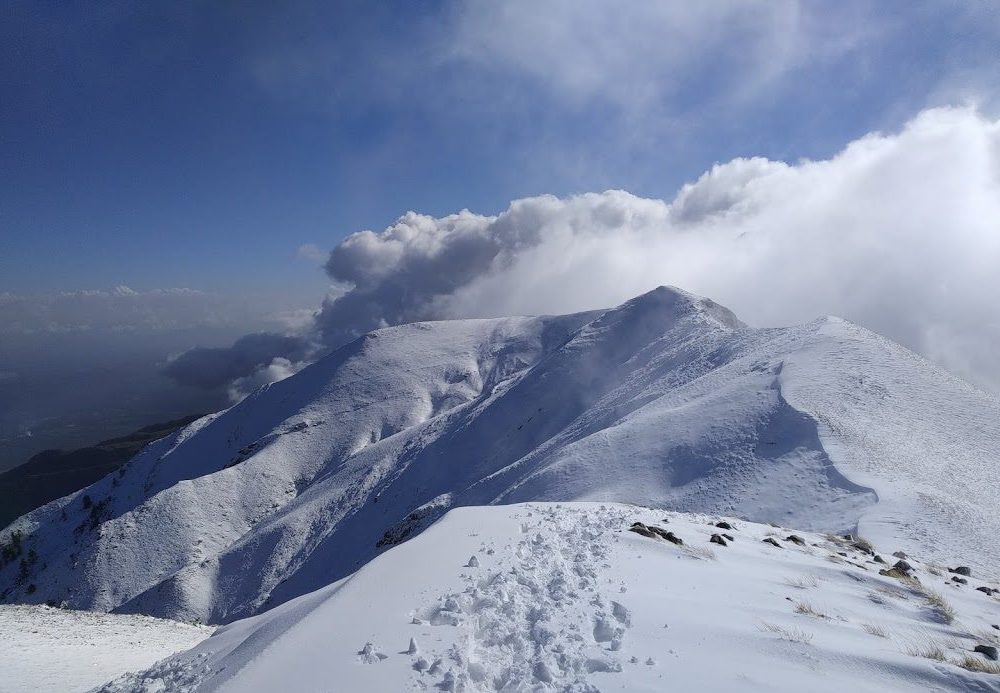
Car
From Athens: 218 km, 2.5 hours
From Kalamata: 98 km, 1 hour
The route follows the A6 (Attiki Odos), A8 (Elefsina-Corinth) and A7 (Corinth-Tripoli) highways, and then the A71 (Lefktro-Sparti) highway.
Bus
From Athens: 226 km, 3.5 hours
From Kalamata: 102 km, 1 hour
KTEL Lakonia operates several daily routes to and from Athens. These routes also serve the Sparta-Tripoli and Sparta-Corinth lines.
From the airport
From Eleftherios Venizelos – Athens Airport: 248 km, 2.5 hours
From Kalamata airport: 96 km, 1 hour
The road transition from Kalamata to Sparta takes about an hour. The route follows the A7 highway (Kalamata-Tripoli) and then the A71 highway (Lefktro-Sparti).
For road access to the paths of the present study, the following road network can be used:
The Sparti – Logastra provincial road
The Spartis – Kalamata highway
The national road Spartis – Mystras
The Spartis – Gytheio national road
The Spartis-Mystra provincial road
Amykles-Kalyvia Sochas street
Kalyvia Sochas – Sochas street
Mystra-Pikoulianika street
Mystras-Taygeti street
Taygeti – Pergandaika street
The Mystras-Vlahochori street
Agios Ioannis-Anavrytis street
In addition to the above paved roads, there are a number of existing forest and rural roads, mainly dirt, which allow access to the existing paths.
Η περιοχή προσφέρει μεγάλη ποικιλία χώρων διαμονής για όλα τα γούστα. Μπορείτε να βρείτε πέτρινα παραδοσιακά σπίτια και ξενώνες, μικρά ξενοδοχεία, resorts πολυτελείας και ενοικιαζόμενα δωμάτια, στο Μυστρά, Παρόρι, στα Πικουλιάνικα, στην Τρύπη, στην Αναβρύτη και στην Ταϋγέτη.
Για περισσότερες πληροφορίες: https://www.exploresparta.gr/tourism/diamoni/
From the main local products of the Spartan land the following stand out: olives of the “Kalamon” variety & virgin olive oil, oranges, honey, wine with the typical Kydonitsa, Mavroudi, Roditis, Athiri and Agiorgitiko varieties, synglino, sausage, pasta, trout and salmon.
Some of the most typical traditional dishes that you can look for on your trip are: Bouzopoula, Kokoras bardouniotikos, Pitaroudes, Kayanas, Kolokythokorphades.
More info at exploresparta.gr
Hiking boots, hat, sunscreen, long pants, water at least 1.5 liters, food, compass, whistle, flashlight, knife or multi-tool, watch and baton. In winter, windproof jacket, waterproof and isothermal clothes.
We also suggest that you never walk alone and always have a first aid kit with you. A well-charged mobile phone will come in handy in difficult situations.
You can hike all year round, except in the winter months when snow may close some paths. Spring and autumn are considered the best seasons thanks to mild temperatures and colourful nature. Due to the altitude, the air can be strong and icy. In summer (July, August) it may be hot enough to walk.
It is important toBefore every hike we are informed about the weather conditions.
We do not stray from the boundaries of the path.
We use fireplaces and avoid fires.
We don’t leave trash. On the path we collect rubbish that may have been left by others.
We do not destroy the vegetation, we respect the historical monuments and the local populations.
We respect wild animals and do not feed them.
Source: trailpath.gr
In the past, there were large mammals that today have disappeared such as bears, deer, roe deer, wolves and even the lynx. Today, 19 mammals have been observed in the mountain fauna, including the fox, badger, ferret, hare and hedgehog. Wildcat and jackal have also been reported although the population status of these species is not well documented. The only large mammal that is often seen is the wild boar.
In the event of the appearance of snakes, as a preventive measure, the hiker can be careful where he steps and where he puts his hands. If you encounter a snake, stay calm and keep a distance of at least two to three meters without disturbing it. In the event that you are bitten by a snake, stay calm, call 166 or 112 and take no action at all, except go to the health center with the help of an attendant. We recommend that you never walk alone.
